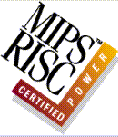What is the state of the project?
We have a bootstrap loader which should run on most ARC systems. A network bootloader for DECstations using the MOP protocol is almost complete.The current kernels based on Linux 1.3.57 include drivers for console, keyboard and ethernet. SCSI will be available soon. On the Acer, Olivetti and Mips boxes, the kernel boots from a floppy, and then mounts root from a NFS server. The kernel is quite reliable; my own machine has currently an uptime of over five days. The only thing that will prevent it from running longer is the fact that kernel hackers frequently reboot their machines.
A network bootloader for R3000-based DECStations using the MOP protocol is almost complete, though certain models of DECStation may be booted using tftp/bootp. Both R3000 and DECStation specific code has been written for the 1.2.11 kernel, and will be released as patches to the current 1.3.57 kernel soon. An experimental DECStation kernel image is already available. This ought to boot to the point of showing the "Calibrating delay loop..." message on most DECStations based on R3000 CPU's.
On the Linux/MIPS FTP sites is a better than nothing distribution available. It currently just a bunch of thrown-together programs and will somewhen later be replaced by a real distribution.
To top
Any support/development tools available?
Yes. We have cross compilers, assemblers and linkers ready to use for
Linux/i386, SunOS 4.1.3 and Solaris 2.3. A Mips R2000/R3000 simulator (SPIM)
for Linux/i386 is also ready to download. Binaries and documentation are
available from the Linux/MIPS FTP sites.
The current version are gcc 2.7.2 and binutils 2.6. There are patches
required to both of these packages in the "src" subdirectory in the above
locations. Both GCC and Binutils may be configured in four target flavours.
This may be a bit confusing but is necessary since Linux/MIPS is currently
migrating from a.out to ELF object format and is available for both big and
little endian byte-order. The four system flavours are:
- mips-linux - big endian a.out.
- mips-linuxelf - big endian ELF
- mipsel-linux - little endian a.out
- mipsel-linuxelf - little endian ELF
For ease of installation binaries for Linux/i386 hosts are also available. Native binaries for Linux/MIPS are included in root-0.00.tar.gz
This is a very incomplete list of Linux/MIPS sites. There are more available and you should try always to use the nearest site.
- sunsite.unc.edu:/pub/Linux/ALPHA/mips
- ftp.mcc.ac.uk:/pub/linux/MIPS
- ftp.ibp.fr:/pub/linux/mips
- ftp.uni-mainz.de:/pub/Linux/arch/mips
- ftp.fnet.fr:/linux-mips
- ftp.softway.com.au:/pub/linux-mips. This site only carries the developers latest DECstation stuff.
To top
What Literature about MIPS CPUs is available?
The book MIPS RISC Architecture from Gerry Kane is something like a bible
for MIPS programmers. It covers all CPUs upto the R4000 family. The
book also contains much other usefull information like the MIPS calling
sequence, a list of macro instructions that expand into multiple machine
instructions, examples of multiprecission arithmetic and more:
There is some additional literature about available as Postscript file on
SGI's FTP Server. These
books contain much more details about the instruction set and hardware
but don't cover software aspects very good. Another advantage is of
course that these files are for free.
Name MIPS RISC Architecture Author Gerry Kane Publisher Prentice Hall, Englewood Cliffs, N.J. 07632 ISBN 0-12-58479-4 There's another ISBN mentioned in the book (0-13-584293-X),
so be careful. Is there a mailing list?
Yes, it is linux-mips@vger.rutgers.edu. To subscribe to this list,
send a message to
Majordomo@vger.rutgers.edu with the command
"subscribe linux-mips _your_email_address_"
in the message body. However this list is more or less dead since most
people discussing Linux/MIPS are developers subscribed to another list.
Please contact linux-mips@fnet.fr
for further information.
Why should you use Linux/MIPS?
Just a few of the reasons that come to mind:
Can I help?
Sure! If you have a Mips box, please let us know. Eventually
we find a way to include your box in the target list. And
we would of course appreciate it, if you can spend some time
into hacking kernel and/or user code. Please feel free to
contact us at linux-mips@fnet.fr!
What does it cost?
Nothing, since Linux/MIPS is freely available. But the development costs --
as any development. We would appreciate any donations such as:
Last changed 16-Jan-1996 Ralf Bächle 
